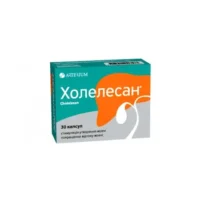Description
Sulfasalazin-EH (Sulfasalazine) Enteric Tablets 500 mg. №50
Ingredients
- Active ingredient: Each enteric tablet contains 500 mg of sulfasalazine.
Dosage
- Dosage: The usual adult dose is 2 to 4 tablets daily, taken in divided doses. Follow your healthcare provider’s instructions.
Indications
- Indicated for: Sulfasalazin-EH is used to treat inflammatory bowel disease, including ulcerative colitis and Crohn’s disease.
Contraindications
- Do not use if: You are allergic to sulfasalazine or salicylates, have a history of blood disorders, or are pregnant.
Directions
- Directions: Swallow the tablets whole with plenty of water. Do not crush or chew them. Take as directed by your doctor.
Scientific Evidence
Pharmacological Effects: Sulfasalazine works by reducing inflammation in the colon. It is a combination of a sulfa antibiotic and a salicylate. The sulfa component acts locally in the colon, while the salicylate component is responsible for the systemic anti-inflammatory effects.
Clinical Trials: Several studies have demonstrated the efficacy of sulfasalazine in inducing and maintaining remission in patients with ulcerative colitis and Crohn’s disease. A study published in the Journal of Gastroenterology showed that sulfasalazine was effective in reducing symptoms and improving quality of life in patients with ulcerative colitis.
Additional Information
- Warnings: It is important to monitor blood counts regularly while taking sulfasalazine, as it can affect the blood cells. Inform your doctor of any signs of infection or bleeding.
- Storage: Store at room temperature away from moisture and heat. Keep out of reach of children.





